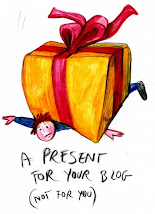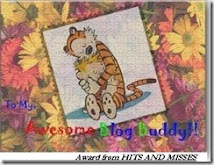Castle Hill is a huge pink granite monolith standing in the heart of the north Queensland city of Townsville. It rises to a height of 286 metres above sea level and dominates the skyline of this relatively low level city which is built on the coastal plain between the Great Dividing Range and the sea.
A striking anomaly in Townsville's mostly flat landscape, Castle Hill means many things to many people. It's where locals bring visiting relatives to point out the beaches, islands, icons and landmarks.
 Many people walk up Castle Hill for regular exercise. There are many different routes to the top, by road or by goat track. A large white stick figure with a halo nicknamed by locals as 'the Saint' can be spotted painted on the sheer east face of the hill. 'The Saint' is a recognized icon of Townsville. The east face is composed of decomposing granite which has proven too crumbly to provide reliable anchors and has thus thwarted several climbing attempts over the years.
Many people walk up Castle Hill for regular exercise. There are many different routes to the top, by road or by goat track. A large white stick figure with a halo nicknamed by locals as 'the Saint' can be spotted painted on the sheer east face of the hill. 'The Saint' is a recognized icon of Townsville. The east face is composed of decomposing granite which has proven too crumbly to provide reliable anchors and has thus thwarted several climbing attempts over the years.
I walk up Castle Hill twice a week and it is one of my favourite place in Townsville. It looks magnificent as the whole city can be seen from the top of the Castle Hill. During daylight it has a different beauty and at night it looks gorgeous with thousands of glittering lights.
 The hill has been the backdrop for the region's record-breaking real estate deals and is a fitness and training ground for the North's soldiers, would-be Kokoda Track pilgrims, the sporting elite and everyday people simply enjoying a walk or jog.
The hill has been the backdrop for the region's record-breaking real estate deals and is a fitness and training ground for the North's soldiers, would-be Kokoda Track pilgrims, the sporting elite and everyday people simply enjoying a walk or jog.
The massive monolith is close to 300m high. That's 997 feet in the imperial system, just three feet short of a mountain.
Visiting American soldiers used the hill as a lookout point during World War II, and an observation bunker remains on one corner at the top.
 The Townsville Road Runners' King and Queen of the Castle race have been held on Castle Hill Road since 2001. Before that it was run on the Goat Track.
The Townsville Road Runners' King and Queen of the Castle race have been held on Castle Hill Road since 2001. Before that it was run on the Goat Track.
Townsville Mayor Les Tyrell said it was hard to imagine Townsville without Castle Hill. He said that as the dominant feature on the landscape, it's a daily presence for many of us. Increasingly, it's also the part of people's back yards as more and more houses have been built along Castle Hill, and of course for some, the day is not complete without a walk or run up Castle Hill.
Castle hill is loved as an icon because it offers so many different meanings, from its aboriginal heritage to the role it played during World War II, to the recreational opportunities it offers.


A striking anomaly in Townsville's mostly flat landscape, Castle Hill means many things to many people. It's where locals bring visiting relatives to point out the beaches, islands, icons and landmarks.
 Many people walk up Castle Hill for regular exercise. There are many different routes to the top, by road or by goat track. A large white stick figure with a halo nicknamed by locals as 'the Saint' can be spotted painted on the sheer east face of the hill. 'The Saint' is a recognized icon of Townsville. The east face is composed of decomposing granite which has proven too crumbly to provide reliable anchors and has thus thwarted several climbing attempts over the years.
Many people walk up Castle Hill for regular exercise. There are many different routes to the top, by road or by goat track. A large white stick figure with a halo nicknamed by locals as 'the Saint' can be spotted painted on the sheer east face of the hill. 'The Saint' is a recognized icon of Townsville. The east face is composed of decomposing granite which has proven too crumbly to provide reliable anchors and has thus thwarted several climbing attempts over the years.I walk up Castle Hill twice a week and it is one of my favourite place in Townsville. It looks magnificent as the whole city can be seen from the top of the Castle Hill. During daylight it has a different beauty and at night it looks gorgeous with thousands of glittering lights.
 The hill has been the backdrop for the region's record-breaking real estate deals and is a fitness and training ground for the North's soldiers, would-be Kokoda Track pilgrims, the sporting elite and everyday people simply enjoying a walk or jog.
The hill has been the backdrop for the region's record-breaking real estate deals and is a fitness and training ground for the North's soldiers, would-be Kokoda Track pilgrims, the sporting elite and everyday people simply enjoying a walk or jog. The massive monolith is close to 300m high. That's 997 feet in the imperial system, just three feet short of a mountain.
Visiting American soldiers used the hill as a lookout point during World War II, and an observation bunker remains on one corner at the top.
 The Townsville Road Runners' King and Queen of the Castle race have been held on Castle Hill Road since 2001. Before that it was run on the Goat Track.
The Townsville Road Runners' King and Queen of the Castle race have been held on Castle Hill Road since 2001. Before that it was run on the Goat Track.Townsville Mayor Les Tyrell said it was hard to imagine Townsville without Castle Hill. He said that as the dominant feature on the landscape, it's a daily presence for many of us. Increasingly, it's also the part of people's back yards as more and more houses have been built along Castle Hill, and of course for some, the day is not complete without a walk or run up Castle Hill.
Castle hill is loved as an icon because it offers so many different meanings, from its aboriginal heritage to the role it played during World War II, to the recreational opportunities it offers.
































